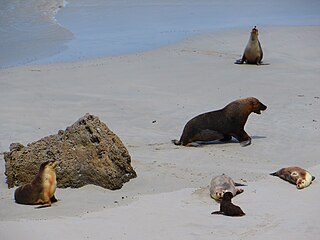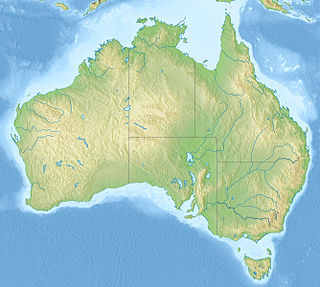| Nuyts Reef Conservation Park South Australia | |
|---|---|
| Nearest town or city | Fowlers Bay [2] |
| Coordinates | 32°6′43″S132°9′6″E / 32.11194°S 132.15167°E Coordinates: 32°6′43″S132°9′6″E / 32.11194°S 132.15167°E |
| Established | 16 March 1967 [3] |
| Area | 47 ha (120 acres) [4] |
| Managing authorities | Department for Environment and Water |
| See also | Protected areas of South Australia |
Nuyts Reef Conservation Park is a protected area in the Australian state of South Australia associated with Nuyts Reef which is located off the state's west coast in the Great Australian Bight about 29 kilometres (18 miles) west south-west of Fowlers Bay. [2] [5]

Protected areas or conservation areas are locations which receive protection because of their recognized natural, ecological or cultural values. There are several kinds of protected areas, which vary by level of protection depending on the enabling laws of each country or the regulations of the international organizations involved.

South Australia is a state in the southern central part of Australia. It covers some of the most arid parts of the country. With a total land area of 983,482 square kilometres (379,725 sq mi), it is the fourth-largest of Australia's states and territories by area, and fifth largest by population. It has a total of 1.7 million people, and its population is the second most highly centralised in Australia, after Western Australia, with more than 77 percent of South Australians living in the capital, Adelaide, or its environs. Other population centres in the state are relatively small; Mount Gambier, the second largest centre, has a population of 28,684.

The Great Australian Bight is a large oceanic bight, or open bay, off the central and western portions of the southern coastline of mainland Australia.
The land forming the conservation park was declared as Fauna Conservation Reserve on 16 March 1967 [3] This was reconstituted as Nuyts Reef Conservation Park on 27 April 1972 under the National Parks and Wildlife Act 1972 to "conserve Australian sea lion breeding habitat." [6] [5] On 19 December 1991, additional land was added to the conservation park to extend protection over land located between high tide and low tide. [2] [7] As of 2018, it covered an area of 47 hectares (120 acres). [4]

The Australian sea lion also known as the Australian sea-lion or Australian sealion, is a species of sea lion that is the only endemic pinniped in Australia. It is currently monotypic in the genus Neophoca, with the extinct Pleistocene New Zealand sea lion Neophoca palatina the only known congener. These sea lions are sparsely distributed through Houtman Arbrolhos Islands in Western Australia and The Pages Islands in Southern Australia. With a population estimated at around 14,730 animals, the Wildlife Conservation Act of Western Australia (1950) has listed them as “in need of special protection”. Their Conservation status is listed as endangered. These pinnipeds are specifically known for their abnormal breeding cycles, which are varied between 5 months breeding cycle and a 17-18 month aseasonal breeding cycle, compared to other pinnipeds which fit into a 12-month reproductive cycle. Females are either silver or fawn with a cream underbelly and males are dark chocolate brown with a yellow mane and are bigger than the females.
In 1980, the conservation park was described as follows: [8]
A group of five small reefs supporting an Australian sea lion colony and providing breeding habitat for seabirds... Five small granite reefs and rocks, some of which are swept by storm waves. The Reefs are without vegetative cover... Isolation and the absence of introduced species has ensured habitat preservation.
The conservation park including its marine zone is classified as an International Union for Conservation of Nature (IUCN) Category Ia protected area. [9] In 1980, it was listed on the now-defunct Register of the National Estate. [8]

The International Union for Conservation of Nature is an international organization working in the field of nature conservation and sustainable use of natural resources. It is involved in data gathering and analysis, research, field projects, advocacy, and education. IUCN's mission is to "influence, encourage and assist societies throughout the world to conserve nature and to ensure that any use of natural resources is equitable and ecologically sustainable".
The Register of the National Estate was a heritage register that listed natural and cultural heritage places in Australia that was closed in 2007. It has been replaced by the Australian National Heritage List and the Commonwealth Heritage List and various state and territory heritage registers.




